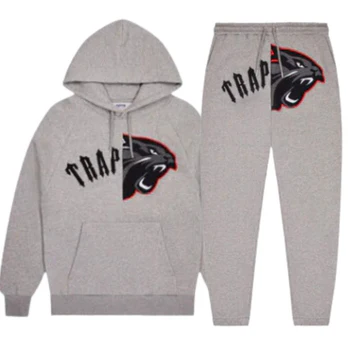Exploring the Trapstar Phenomenon: A Trend Beyond Fashion
Trapstar is more than just a clothing brand—it’s a movement that speaks to urban culture, music, and streetwear fashion. Born in the heart of London, Trapstar has carved a unique space in the fashion world by blending the Trapstar raw, gritty essence of street life with high-end design sensibilities. Known for its bold logos, edgy designs, and collaboration with musicians and artists, Trapstar has become synonymous with the global rise of trap music and its influence on fashion.
Table of Contents
The Birth of Trapstar: A Brand with Roots in Street Culture
Trapstar was founded by three friends—Lee, Will, and Mikey—in 2005. What started as a small streetwear brand quickly gained traction thanks to its authentic representation of London’s underground music scene. At its core, Trapstar represents the hustle and resilience of the streets, aligning closely with the themes of trap music, which often deals with survival, success, and struggle.
The brand’s name itself is a nod to the “trap” lifestyle, a term that refers to the hustle culture in urban areas. In this sense, Trapstar is not only a fashion label but also a symbol of the everyday grind and the ambition to make it out of tough circumstances.
Iconic Streetwear: Blending High Fashion with Grit
Trapstar’s style is distinctive. The brand merges bold graphics, vivid colors, and intricate designs, often featuring street elements like graffiti, patches, and logos that reflect the gritty realities of the streets. But it doesn’t stop there—Trapstar takes these elements and elevates them with a touch of high-fashion sophistication. This fusion has made the brand popular with those who seek to make a statement through their clothing, whether they’re in the club, on the streets, or at a high-profile event.
Trapstar’s T-shirts, hoodies, jackets, and hats are often adorned with the iconic Trapstar logo, but it’s the innovation in their designs that sets them apart. Each piece often tells a story or references something culturally significant. The urban-chic designs are inspired by London’s vibrant culture, making them a true representation of the city’s energy.
The Trapstar and Music Connection
One of the key reasons for Trapstar’s success has been its symbiotic relationship with the music world, particularly trap music and grime. The brand has collaborated with a variety of musicians, including some of the biggest names in the industry, such as Jay-Z, Rihanna, and Stormzy. These partnerships have not only increased the brand’s visibility but have also cemented its place as a symbol of cool, youthful rebellion.
Trapstar’s designs have become synonymous with hip-hop and grime culture, as the brand often releases limited edition collections or exclusive pieces tied to albums, tours, or music videos. The collaboration between fashion and music is natural, as both share a passion for self-expression and individuality.
Trapstar’s Global Reach: From London to the World
While Trapstar began as a London-based brand, its influence has gone global. The brand’s ability to tap into universal themes of struggle, success, and street culture has helped it connect with people around the world. From the United States to Europe, and even Asia, Trapstar has a loyal following. Celebrities, influencers, and musicians from around the globe are frequently seen sporting the brand, further solidifying its status as an international streetwear icon.
The Future of Trapstar: Evolving Without Losing Identity
As Trapstar continues to grow, it faces the challenge of maintaining its authentic roots Trapstar Tracksuit while expanding its global reach. With the ever-changing landscape of fashion and music, the brand will likely evolve, but its core message of resilience and street credibility is unlikely to change. Trapstar’s success lies in its ability to adapt to trends while staying true to its roots—making it not just a brand, but a cultural statement.
Trapstar represents more than just clothing. It’s a reflection of urban culture, a celebration of overcoming obstacles, and a symbol of the dynamic world where fashion and music collide. As the brand continues to push boundaries, it will likely remain a cornerstone of streetwear fashion for years to come.


